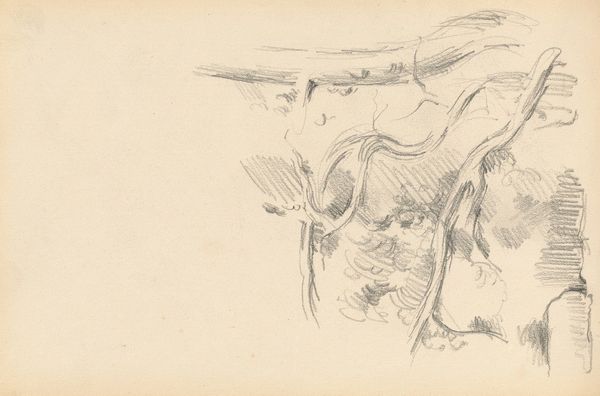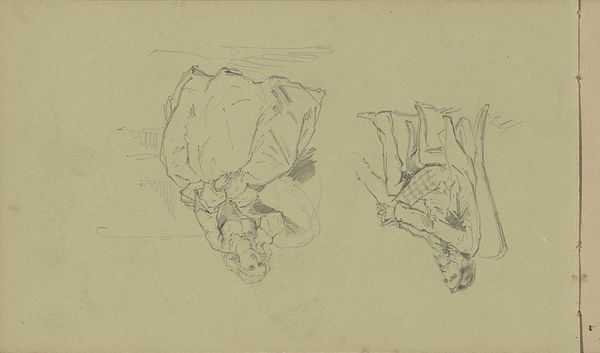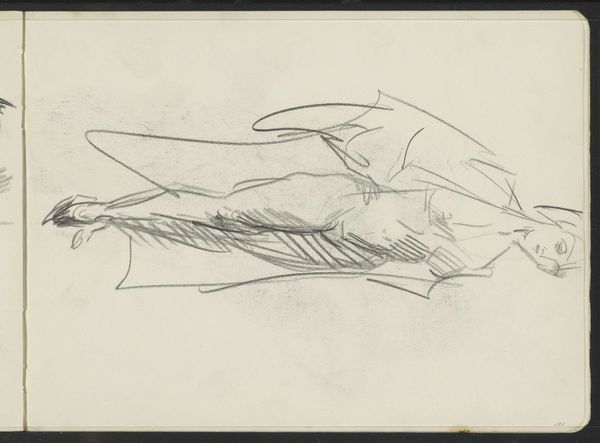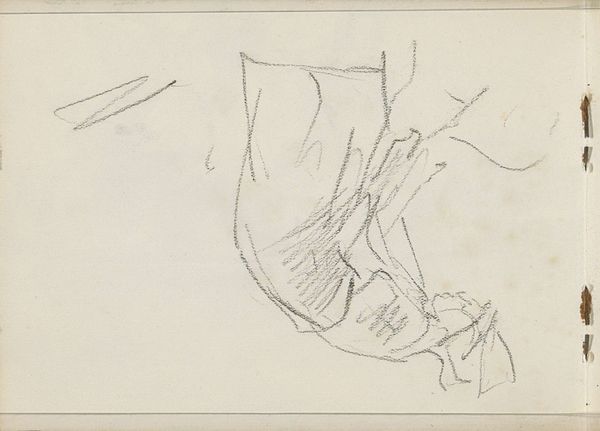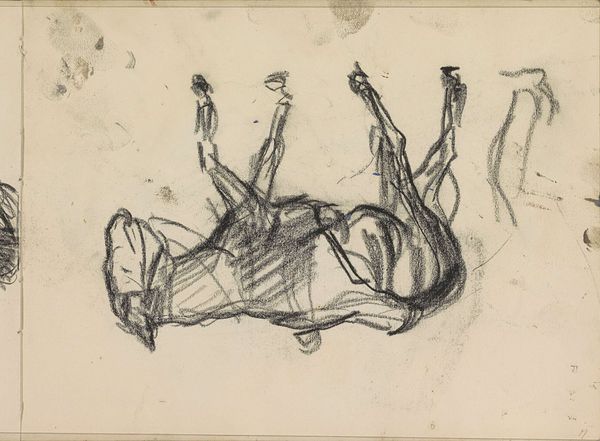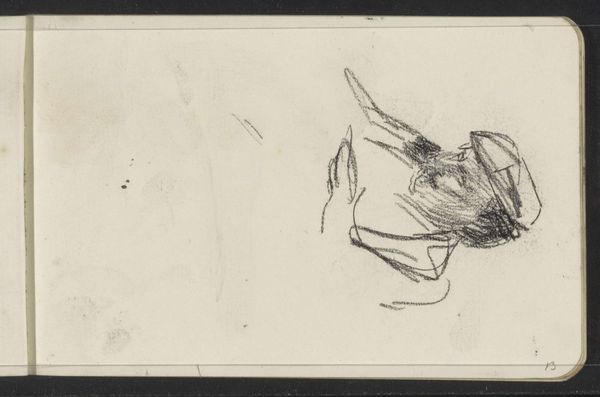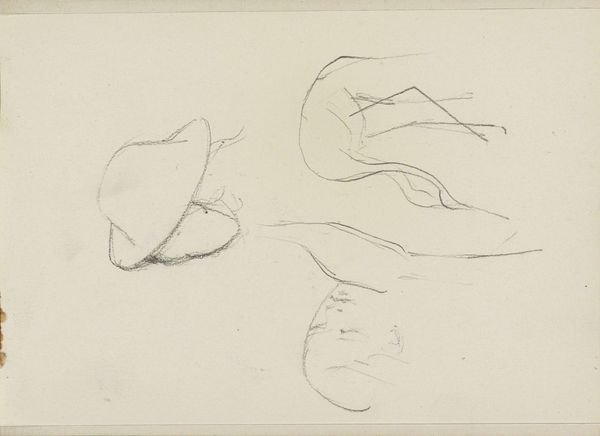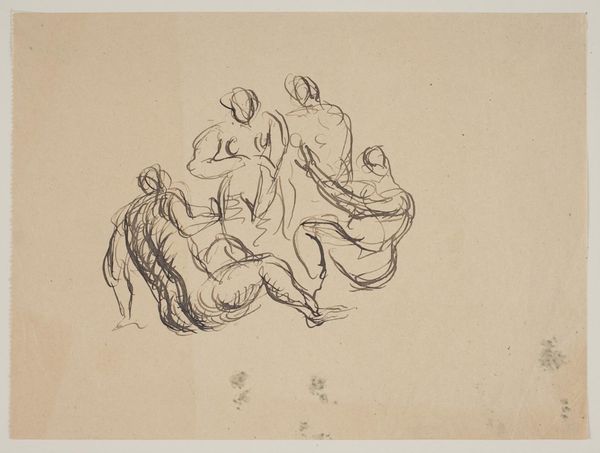
Copyright: Rijks Museum: Open Domain
Editor: So, this is "Twee handen," or "Two Hands," by Isaac Israels, dating from between 1875 and 1934. It's a pencil drawing currently held at the Rijksmuseum. It feels very immediate and unfinished, like a quick study. What can you tell me about it? Curator: Looking at the pencil work, its texture reveals a lot. Consider the ready availability of pencils during this period; how the artist employed such an accessible tool impacts the perceived value and purpose of the art. Is it mere preparatory work, or is Israels commenting on the artistic process itself? Editor: That's interesting. I hadn’t thought about the pencil itself being significant. Does the "unfinished" quality relate to that at all? Curator: Precisely. The seemingly casual sketch challenges traditional notions of high art by embracing the everyday material. And look at how the line varies. Is it quick? Slow? Deliberate? Those aspects tell a story. Consider, too, the role of the artist as worker. This sketch allows us to see that labor in its nascent form, as process over grand statement. Editor: So, it's almost like the medium is the message? What does that suggest about the hands themselves as subject matter? Curator: Hands are tools, instruments of labor. Here, though, they are depicted at rest, perhaps gesturing or expressive but not explicitly at work. Is Israels contemplating labor? Or is it artmaking itself? In that way, perhaps the depiction conflates those ideas, interrogating class structure itself through the common hand. Editor: So, it encourages a consideration of not just what is depicted, but how and with what. I hadn't considered art this way. Curator: Exactly. It highlights the act of making. Hopefully this changes the way you look at material moving forward. Editor: Definitely, I'll be sure to think about how materials and labor influence a work’s message and worth now. Thanks!
Comments
No comments
Be the first to comment and join the conversation on the ultimate creative platform.

